Catholicism

NOT LONG AGO, a friend asked my opinion about birth control pills. She and her husband, who have several young children, wanted to use them, but she had misgivings.
She had read an article by a Christian couple that had frightened her. “They basically just blasted the entire idea of using hormonal birth control on the basis that it is pretty much abortion,” she said.
Although evangelical sex manuals from the 1970s, including Ed and Gaye Wheat’s Intended for Pleasure, advocated the pill as a means of enjoying the delights of the marital bed without fear of pregnancy, some evangelicals today have a very different perspective. A recent Christianity Today blog series on contraception that I participated in received vigorous and occasionally vitriolic responses, despite giving voice to a range of perspectives: Advocates of hormonal contraception were featured alongside proponents of natural family planning.
How is it that contraception has become a religious battlefield—even, or perhaps especially—among evangelical Protestants?
A certain myth currently in circulation among conservative Christians (Catholic and evangelical alike) harkens back to a pre-contraceptive past when parents welcomed innumerable children, each as a gift from God. In this mythical narrative, the advent in the 1960s of the modern contraceptive pill fostered in people a “hedonistic mentality” and made them “unwilling to accept responsibility in matters of sexuality.” After the pill, children were no longer seen as gifts, but as burdens—“diseases” to be vaccinated against. If, despite precautionary measures, a woman conceived, then her modern “contraceptive mentality” would all but determine that she have an abortion. “Abortion becomes the only possible decisive response to failed contraception,” wrote Pope John Paul II in his 1995 encyclical Evangelium Vitae.
Echoing Evangelium Vitae, in 2006 Southern Baptist leader Al Mohler called for the “rejection of the contraceptive mentality that sees pregnancy and children as impositions to be avoided rather than as gifts to be received, loved, and nurtured.” He also charged that the “effective separation of sex from procreation” was “one of the most ominous” and “important defining marks of our age,” leading to all kinds of sexual degradation.
The implication, of course, is that earlier ages were more closely aligned with God’s will and with “natural law,” the classical philosophy praised by Pope Paul VI in his 1968 encyclical Humanae Vitae.
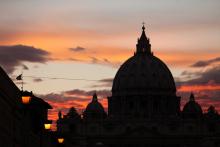
On July 21 and 22, the Vatican hosts two conferences on human trafficking and climate change, bringing the mayors of major cities — including several in the U.S. — to Rome for the events. What do human trafficking and climate change have to do with each other? And what does Catholicism have to do with them? Let us explain.
Q: Why is the Vatican concerned with human trafficking and climate change?
A: If Pope Francis has two pet issues, they are human trafficking and climate change. Since the first year of his papacy he has spoken against human trafficking, calling it “a crime against humanity” and lamenting it as modern slavery. It’s an even bet that when the pope addresses the United Nations in late September he will hammer it as one of the crucial issues of our time. Ditto on climate change. In June, the pontiff published his encyclical — the highest teaching of the church — on climate change.
“Our home is being ruined and that hurts everyone, especially the poorest among us,” Francis said just before the publication of the encyclical.
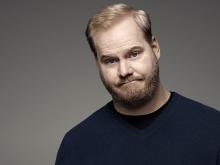
Jokes about somebody’s religious beliefs are often duds.
But jokes about your own religious beliefs somehow push the line between funny and offensive, making room for laughter and, occasionally, sharp commentary.
That’s the philosophy behind The Jim Gaffigan Show, a new series premiering on TVLand on July 15 featuring Jim Gaffigan — the popular stand-up comedian known for his Comedy Central special and the books Dad Is Fat and Food: A Love Story — and his wife, Jeannie.
The husband-and-wife team say their Catholicism — with its daily prayer, weekly Mass, and rosary recitation with their five kids — is such a part of their own lives that not including it in their work would be dishonest.
“It’s part of the story,” said Jeannie Gaffigan, an executive producer of the new show and Jim’s frequent collaborator.

Pataki is Roman Catholic but has frequently taken stances that conflict with Catholic teaching. He supports abortion rights and tried to restore the death penalty in New York state. He doesn’t often invoke his faith and has selectively highlighted his Catholicism. Here are five faith facts about the married father of four.
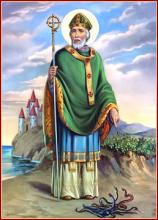
For Catholics, Episcopalians and some Lutherans, March 17 is the Feast Day of St. Patrick. For the rest of us, it’s St. Patrick’s Day — a midweek excuse to party until we’re green in the face. But who was Patrick? Did he really drive the snakes out of Ireland or use the shamrock to explain the Trinity? Why should this fifth-century priest be remembered on this day?
Q: Was St. Patrick a real guy, and would he approve of green beer?
A: Yes, Patrick was a real person, but not much is known of his life. He was born in the late 300s when the Roman Empire extended to England, so he was not “really” Irish — like the vast majority of people who celebrate his day. In his “Confessio,” one of only two surviving documents attributed to him, Patrick wrote that while his father was a Christian deacon, he was not devout. At age 16, Patrick was captured by Irish marauders, carried across the Irish Sea and enslaved. Patrick spent six years alone in the wilderness tending his master’s sheep, praying constantly. “It was among foreigners that it was seen how little I was,” he wrote. He began to have visions and hear voices that told him: “Look, your ship is ready.” So Patrick left his first flock and walked 200 miles to the coast. It’s a pretty safe bet he would have loved a beer, green or otherwise, as he stepped into a boat bound for England.

The 6.5 million people in the greater Houston area now surpass New York City and Los Angeles as the most racially and ethnically diverse urban area in the U.S. That's the site where a broad spectrum of U.S. church leaders met this week to consider the impact of immigration on their congregations, and on the rapidly changing expressions of Christianity within North American culture.
The group gathered at the annual convocation of Christian Churches Together in the USA, which includes the leadership of the U.S. Catholic Conference of Bishops, several Pentecostal and evangelical denominations, the Orthodox Churches, some Historic Black churches, and nearly all the major historic Protestant denominations. All of these are experiencing the impact of immigration. Most dramatically, for instance, 54 percent of millennials — those born after 1982 — who are Catholic are Latinos. Of the 44 million people living in the United States who were born in another country, 74 percent are Christian, while only 5 percent are Muslim, 4 percent Buddhist, and 3 percent Hindu.
While church leaders in the U.S. have expressed united support for the reform of U.S. immigration laws, this is the first time an ecumenical body has gathered to examine together the actual consequences of immigration on the life and witness of its churches.
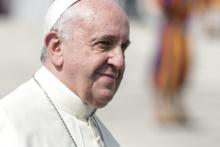
In a powerful sermon that signaled his desire to push ahead with historic reforms, Pope Francis on Sunday said the Roman Catholic Church must be open and welcoming, whatever the costs.
He also warned the hierarchy not to be “a closed caste” but to lead in reaching out to all who are rejected by society and the church.
“There are two ways of thinking and of having faith: we can fear to lose the saved and we can want to save the lost,” Francis told hundreds of cardinals and bishops arrayed before him in St. Peter’s Basilica at a Mass centered on the story of Jesus healing a leper rather than rejecting him.
“Even today it can happen that we stand at the crossroads of these two ways of thinking,” the pope said as he outlined the current debate in the church between those seen as doctrinal legalists and those, like Francis, who want a more pastoral approach.
“Jesus responds immediately to the leper’s plea, without waiting to study the situation and all its possible consequences,” Francis declared. “For Jesus, what matters above all is reaching out to save those far off, healing the wounds of the sick, restoring everyone to God’s family. And this is scandalous to some people!”

In discussing birth control and population issues when visiting the Philippines recently, Pope Francis said the Catholic Church promoted “responsible parenthood” that didn’t require good Catholics to be “like rabbits.” The frank imagery prompted a flurry of playfully creative headlines that ranged from mocking to woeful. And the byproduct of such reaction stories? The continued misinformation on what Catholics currently practice and what the Catholic Church actually teaches when it comes to family planning.
The pope’s remarks referenced Catholic teaching that prohibits artificial birth control. Family size, according to the Church, should be regulated by abstinence or a form of Natural Family Planning, sometimes characterized simply as trying really hard not to have sex when you’re “not supposed to,” which often fails and results in a ton of kids. Proponents of NFP say the method(s), and its practitioners, are too often misunderstood.
NFP for pregnancy prevention involves charting a woman’s cycles by testing for various biological markers — like basal temperature or cervical mucous — in order to assess fertile days and abstain from sex during that time. According to the World Health Organization, fertility awareness methods like NFP are 95-97 percent effective when used correctly and consistently (75 percent with typical use), and individual NFP models claim higher effectiveness.
Practicing NFP can certainly be complicated, especially when taking into account marriage and family dynamics that aren’t always conducive to the attention it requires.
But while it may be more difficult than, say, popping a daily pill or using an IUD, modern technology — like tracking apps and temperature-monitoting gadgets — is simplifying the process and coinciding with a resurgence in popularity. NFP practitioners say they appreciate the choice it offers — whether the motivation is following Church teaching or simply avoiding synthetic hormones.

It was a good thing for Trinitas Cellars that Cardinal Jorge Mario Bergoglio took the name Pope Francis, and not, say Pope Malbecius.
When the Argentine cardinal became pope in 2013, Trinitas didn’t have any malbec — the famous Argentine grape — in its cellars. But it happened to have a few barrels of cabernet franc.
Behold! Thus was born “Cabernet FRANCis,” a 2012 red wine from Trinitas, a Catholic-owned winery nestled behind the iconic grape crusher statue at the southern foot of the Napa Valley.
“People kept asking me, ‘Why didn’t you make the pope a malbec?’” said Garrett Busch, the 28-year-old CEO of Trinitas, as he spoke in the winery’s book-lined library tasting room, a bottle of the wine before him. “And I’m like, ‘Come on guys, he made it easy on us.’”
Actually, the story is a bit more complicated. Trinitas, which is owned by Garrett’s parents, Tim and Steph Busch, made the family’s Catholic faith a part of business since its founding in 2002. Meetings and special events begin with prayer, winery dinners start with grace, and the winery’s website announces the family’s intention to “serve God in all they do.”
Even its name is Latin for the Trinity of Father, Son and Holy Ghost.
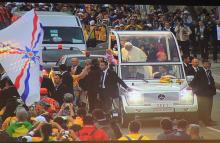
In just one generation, Latin America has seen the number of people who identify themselves as Catholic plummet, with more people becoming Protestant or dropping religion altogether, a new report shows.
The shift is dramatic for a region that has long been a bastion of Catholicism. With more than 425 million Catholics, Latin America accounts for nearly 40 percent of the global Catholic population. Through the 1960s, at least 90 percent of Latin Americans were Catholic, and 84 percent of people surveyed recently by the Pew Research Center said they were raised Catholic.
But the report released Nov. 13 found that only 69 percent of Latin Americans still consider themselves Catholic, with more people switching to more conservative Protestant churches (19 percent) or describing themselves as agnostic or religiously unaffiliated (8 percent).
Even last year’s election of an Argentine as pope to head the Catholic Church has led to conflicting feelings in Latin America.
“While it is too soon to know whether (Pope) Francis can stop or reverse the church’s losses in the region, the new survey finds that people who are currently Catholic overwhelmingly view Francis favorably and consider his papacy a major change for the church,” the report said. “But former Catholics are more skeptical about Pope Francis. Only in Argentina and Uruguay do majorities of ex-Catholics express a favorable view of the pope.”
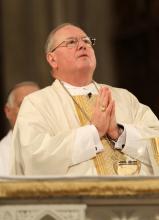
The Archdiocese of New York, with the second-largest Catholic population in the country and an unparalleled place in U.S. church history, is shrinking: Cardinal Timothy Dolan on Nov. 2 announced that nearly a third of the archdiocese’s 368 parishes would be merging, and some would close.
“This time of transition in the history of the archdiocese will undoubtedly be difficult for people who live in parishes that will merge,” Dolan said in a statement. “There will be many who are hurt and upset as they experience what will be a change in their spiritual lives, and I will be one of them.”
The reorganization was years in the making and some downsizing appeared inevitable, as happened in the last round of cutbacks, in 2007. While the sprawling archdiocese is still home to 2.8 million Catholics, fewer of them are attending Mass or Catholic schools, and costs are rising. The archdiocese said it is spending $40 million a year to prop up failing or redundant parishes.
Still, the extent of the changes, the largest in the more than 200-year history of the archdiocese, upset many Catholics, especially in neighborhoods where waves of immigration had built and revived parishes across the decades.
“I feel very sad; I was baptized here,” Sonia Cintron, 75, a member of the Church of the Holy Rosary in East Harlem, told The New York Times. “Here we’re family; we loved each other.”
Some parishioners have vowed to try to keep their churches open through petitions and protests.
Former Florida Gov. Jeb Bush recently stated that people who come into the country unauthorized to find work and support their families are doing so as “an act of love.” In a Miami Herald op-ed, Archbishop Thomas G. Wenski is of Miami echoed the idea that this conversation is fundamentally about people:
To demonize irregular migrants as “lawbreakers” certainly generates heat but does not give any light to the urgent task of fixing our broken immigration system. This is not to condone the violation of the law — but as Gov. Bush suggests, these migrants are not criminals. Being in the United States without proper documents is not a criminal felony but a civil misdemeanor.
With his comment, Gov. Bush hit a nerve that runs through the immigration debate… With one three-word phrase, Gov. Bush has helped humanize these migrants — they are human beings who love their families, just as Americans do . This runs counter to the rhetoric of many shrill anti-immigrant voices and reframes the debate in human terms.
Read full article HERE .


OUR LADY QUEEN of Peace church sits atop a low bluff overlooking the Army Navy golf course. This vibrant Arlington, Va. Catholic community has a history of staring hopelessness in the eye and declaring, “Not on our standing ground!”
Queen of Peace was founded by African Americans in the midst of virulent segregation. In the 1940s, Arlington’s black Catholics had to travel two hours by buses to attend a Mass where they were welcome. There was a closer church, but black Catholics were relegated to the back pew and prevented from receiving communion before whites. In 1945, 16 families pooled their money, hired a black real estate agent, and purchased small parcels of adjoining property under various names so as to not arouse suspicion. In an era when redlining and “neighborhood covenants” protected white enclaves and economic power, this was a courageous act. A little less than two acres—their standing ground—was purchased for $14,000. The bishop blessed Queen of Peace, Arlington’s first black Catholic congregation, on Pentecost Sunday 1947.
Now, nearly 70 years later, this multicultural community is asking a new question: With global temperatures rising and changes visible everywhere in nature, how do we face the truth of climate change?
During a speaker series in March focused on “the integrity of creation,” I encouraged them to overlap the ecclesial concept of “parish” with the ecological one of “watershed.” For life to persist, there must be living water. Scientists tell us that each watershed, no matter how small, is responsive to climate change. Since human activity has destabilized the climate, changing human activity is important in undoing the harm. And since the earth’s biosphere is made up of interlinked watershed communities, perhaps restoring our particular watershed is analogous to healing the earth at its “cellular” level, which would be a positive contribution.


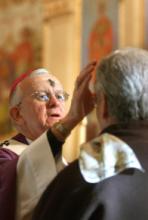
This Wednesday marks the beginning of Lent with Ash Wednesday. For Christians, Lent is a 40-day season of fasting, reflection, and penance culminating in Holy Week and the Easter Sunday commemoration of Jesus’ Resurrection.
The Rev. Arne Panula, director of the Catholic Information Center in Washington, D.C., said his experience is that more people go to church on Ash Wednesday than any other holiday, including Christmas and Easter.
Here are a few basics on the Ash Wednesday tradition.
Pope Francis' recently named 19 new cardinals—half of which hail from non-European countries—to serve the Roman Catholic Church.
![St. Peter in Prison (The Apostle Peter Kneeling). Photo courtesy Rembrandt [Public domain], via Wikimedia Commons/RNS](https://sojo.net/files/styles/medium/public/blog/Rembrandt_st._peter_in_prision.jpg)
When Pope Francis cradled the small box said to contain nine bone fragments believed to be the mortal remains of St. Peter, the first pope, he fanned the flames of a long-standing debate over the authenticity of ancient church relics.
Most old churches in Italy contain some ancient relic, ranging from a glass tube said to hold the blood of St. Gennaro in Naples to a section of what is believed to be Jesus’ umbilical cord in the Basilica of St. John of Lateran in Rome. Perhaps the most famous religious relic in Italy — the Shroud of Turin, believed by many to be Jesus’ burial cloth — will go on display again in early 2015, and Turin Archbishop Cesare Nosiglia this week invited Pope Francis to attend its public debut.
But St. Peter’s bones are of particular importance, since they are the very basis — both architecturally and spiritually — for Catholicism’s most important church. And yet the bones were only discovered during a series of excavations in the 1940s, almost 1,900 years after Peter died, in either 64 or 67 A.D.
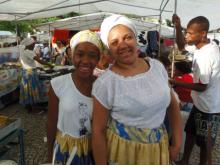
The couple practiced Candomble, an African-Brazilian faith with roots in Brazil’s slave trade.
They dressed in white and believed in an all-powerful God who is served by lesser deities, blending Catholicism with African spiritualism, or the belief that the dead communicate with the living.
But their neighbor, who attended a local evangelical church, disapproved. On a balmy day one year ago he shot and killed the husband as he was screwing in a light bulb in his yard.